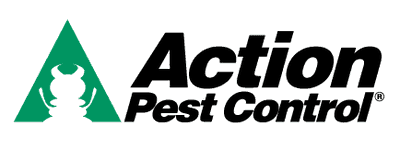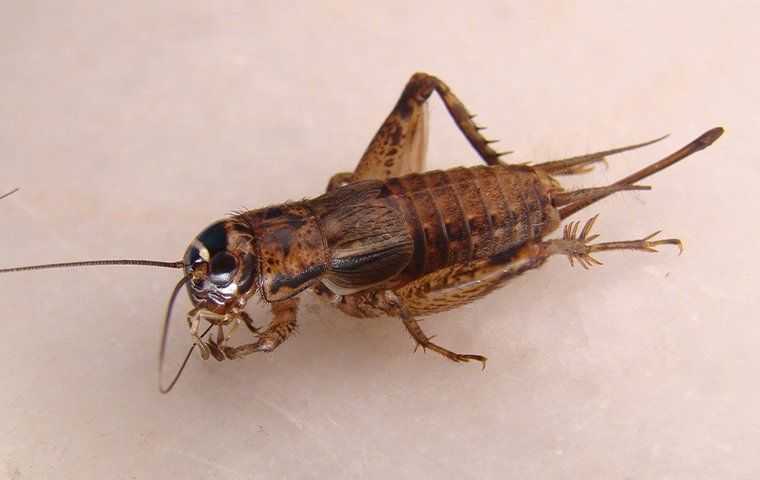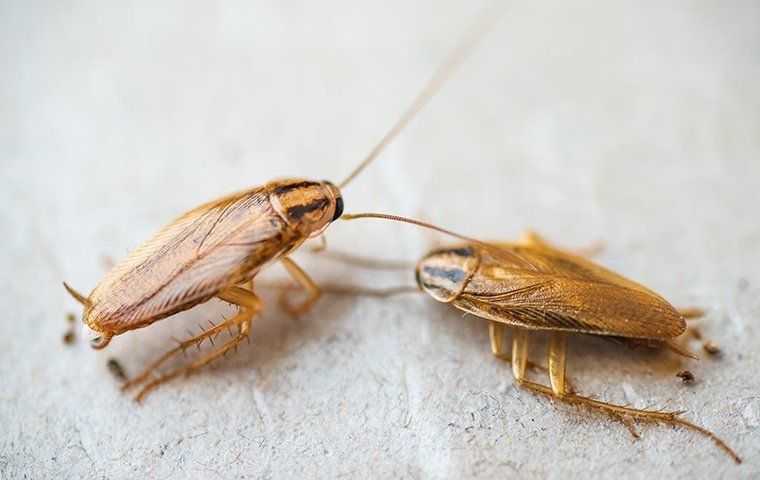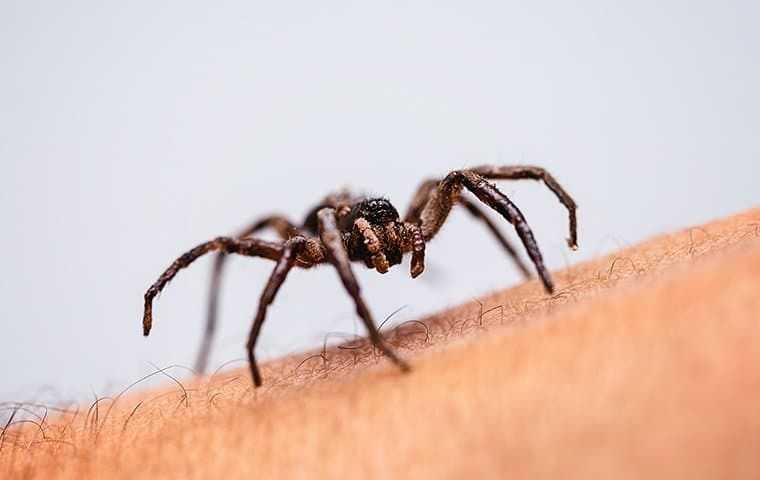When you bought your home, what were some worries on your mind? Many first-time home buyers think about lots of things that might go wrong, like the boiler breaking or the chimney getting clogged. Others might think about all the pests that might try to get indoors. One kind of pest that loves to invade homes here in Lexington are termites, however, these local insects are not like other bugs in our area. They invade with a terrible purpose. Their only job is to chew tiny tunnels throughout your home’s structural wood. As you can imagine, this can lead to extensive damage over time.
We are in the business of helping homeowners like you avoid this type of damage. If you have not taken the time to consider the different types of termites in Lexington or what problems they cause inside and around local homes, we have some things for you to think about today. If you are looking for a quick solution to remove an active termite infestation from your property, do not hesitate to call our team at Action Pest Control. We would be more than happy to show you what pest control in Lexington looks like and offer some simple methods to identify, prevent, and eliminate destructive pests like termites. Otherwise, keep reading.
Know The Warning Signs Of A Termite Infestation

If there is anything you should know about termites it is that these pests are elusive. You will almost never see one of these bugs crawling around your living areas. In fact, you are more likely to see them flying about. We will talk more about this in just a bit. What matters now is that you understand how difficult these pests are to detect. Subterranean termites, the most common species in Lexington, invade homes through tubes made of dirt. Once they make contact with your house, they will chew through wooden structures.
Most often, it takes months, if not years, for any clear signs of damage to come from this behavior. The early signs of these pests are damage to wood on your property, mud tubes they use to get to wood, and termite swarmers around your home’s exterior looking for places to nest. If you didn’t know, termite swarmers are winged reproductive termites that come from fully mature colonies of termites. Their only job is to find new areas to build and feed.
The longer termites are allowed to consume wood inside your home, the more obvious they will become. This is to say, given enough time, signs of termites will become more and more apparent. Subterranean termites spread moisture as they chew tunnels through homes. This moisture can negatively affect walls, floors, ceilings, windows, doors, and other structures. If you start to notice moisture spots or find that windows and doors are becoming harder to open and shut due to exterior swelling, you might have a termite problem. Given more time, you will start to notice bubbling or peeling wallpaper/paint, buckling support beams, sagging floors, and other similar forms of damage. Hopefully, you have noticed a problem before things get this severe and have taken action to get rid of these pests.
Because termites are so difficult to identify before they cause serious problems, we highly recommend investing in some form of termite identification once a year. We offer quick and effective inspections for these pests at Action Pest Control. Let us know if you would like us to pay you a visit to see if these destructive insects are around.
Why Termites Infest And Destroy Wooden Structures
Termites are basic insects. They are driven by one thing and one thing alone: survival. For termites, survival mostly depends on finding things to eat. Out in nature, these pests will eat and break down things like fallen trees, dead stumps, and organic clutter on the ground like leaves and sticks. This is extremely helpful as it helps keep our environment clean. The only problem is that these pests cannot discern helpful eating from harmful eating. All they see are available food sources. They are just as happy to take care of the fallen tree in your yard as they are to damage your home.
The only thing that matters to termites is whether or not wood is edible. You see, most kinds of termites in our area prefer to consume wood that is softened by things like moisture damage, rot, or decay. They do not like consuming wood that is painted, treated, and in good condition. Given enough time, all homes experience some form of moisture damage, rot, or decay. If termites find a section of your structure that is negatively affected in this way, they will chew their way in. They will then spread moisture and continue eating for as long as possible. If you have ever seen an old and decrepit building that is on the verge of collapse, you know what these pests are capable of!
The good news is that damage will become noticeable long before these destructive insects are able to level your home. Hopefully, you will address problems before noticeable damage presents itself or you will have some form of termite control in place to stop these pests before they even think about invading your property.
How To Identify And Remove Factors That Attract Termites
Now that you know more about termites and the problems they cause on local properties, we think you should know how to identify and address factors that might draw these pests in. This is often easier said than done. To make your life easier, here is a simple list of steps to take to reduce your chances of finding these pests inside or around your home.
- Walk around your property and look for organic clutter like sticks and leaves. Remove these items from your yard.
- Check for items like cardboard and newspaper around your yard and in open storage areas and remove them from your property.
- Remove dead stumps and fallen trees from the ground around your property.
- If you have any firewood or untreated lumber, store it at least 30 feet away from your home’s exterior or in an area that is dry and covered, and keep it up off the ground.
- Eliminate sources of rainwater build-up on your property and address areas that might allow for build-up around your home’s exterior.
- Make sure your gutters are in good working condition and have them cleaned at least once a year.
- Identify and repair structural wood inside your home that is moisture damaged, rotting, or in decay.
- Keep your windows and doors closed when you are not using them and equip them with quality screens if you would like to keep them open.
- Locate and repair damage to your home’s exterior. This should include cracks and gaps in its foundation, spacing around wires and pipes, and damage to windows and doors.
- Make sure there is a non-wood barrier between your home’s structural wood and exterior soil around its base.
Preventing termites on your own is a huge task. Even with all of these steps done perfectly, there is still a chance that these pests will find their way indoors. Our goal is to help you find preventative professional options to stop these pests before they even think about invading your home or property. We would be more than happy to inspect your home for active termite problems and recommend some simple courses of action to remove these pests and stop them from coming back in the future.
Professional Termite Control Offers Lasting Protection For Your Home
There should never be a time when you allow termites to damage your home. The challenge is with knowing that these pests are around. An easy option to make sure your home and property are protected is to invest in professional year-round termite control. This is the absolute best way to get peace of mind and live your life knowing that termites cannot access your home to cause you trouble.
At Action Pest Control, we use a product called Termidor®. This liquid-injected treatment is a titan in the pest control industry and works effectively to eliminate termites both inside and around local properties. It works through something called the “transfer effect.” Termites are not immediately killed when they interact with this substance. They carry it on their bodies back to their nest where other members clean it off of them. After a short time, Termidor® takes full effect and eliminates colonies from the inside out. The best part is that Termidor® stays active year-round and is practically invisible. This combined with our money-back guarantee and damage warranty of up to $250,000 should leave you confident that we are your best option for the job at hand.
Reach out to our team at Action Pest Control if you have questions about our termite control or if you are ready to make an appointment for your home here in Lexington.

What Action Pest Control Customers Are Saying
Action is trusted by over 23,000 happy customers, see what our customers are saying!

“ Your PEST CONTROL deserves a ten star rating!!!!!”

“ I wanted to tell you that we really enjoy having Jason as our technician. He is polite, professional and easy to talk to about any issues or concerns. Please give him a pat on the back from us for his good work. Thanks very much.”

“ Derek is always cooperative, enthusiastic, and professional. Excellent service whether I am home or not.”
Schedule Your Free Inspection
Complete the form below to schedule your no obligation inspection.









